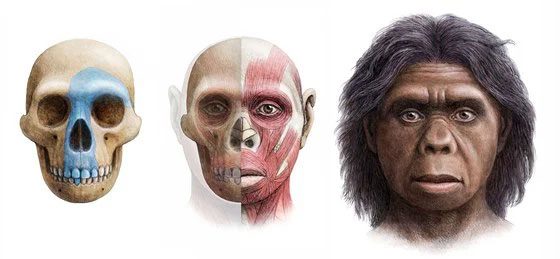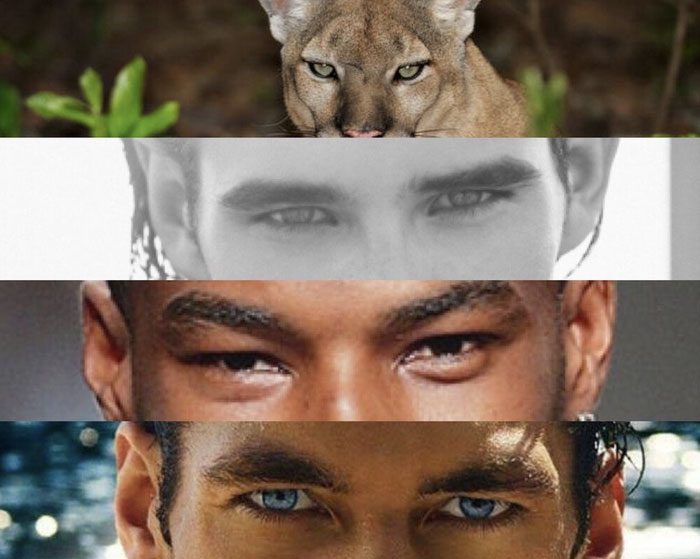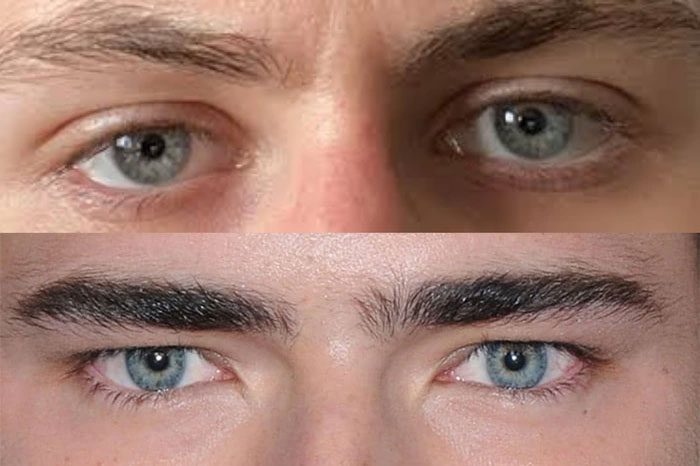Similar to tigers, lions, and other large carnivores, our eyes are oriented towards the front, meaning we can see clearly in the forward area to track and hunt prey.
Are Human Eyes the Result of Evolution from Carnivorous Animal Eyes?
The evolution of human biology is a long and complex process involving hundreds of millions of years and many different species.
During this process, our human ancestors also underwent various evolutionary changes. Among these changes, the development of human eyes has also experienced significant transformations.

The two eyes of humans positioned on the face are the result of a long evolutionary process. This arrangement is also the best adaptation to the environment. If the eyes are positioned higher on the body, they can see farther, which is beneficial for finding food and spotting enemies, thus providing a wider field of vision. This enhanced vision contributes to the cognitive development of humans.
The evolution of biological eyes may trace back to primitive organisms approximately 500 million years ago. These organisms were unicellular and lacked any sensory perception, including eyes.
In the subsequent millions of years, these organisms began to gradually evolve, undergoing many changes, including the development of eyes.
The earliest eyes were simple photoreceptive cells that could detect light and send signals to the brain for processing. These light-sensitive receptors first developed from individual cells and gradually evolved into the complex structure of the eye, which includes the lens, retina, and iris.

The positioning of eyes at the front serves a purpose. Humans walk forward, and if they encounter an obstacle, they will maneuver around it; the hands, which are accustomed to performing tasks in front, also necessitate that the eyes look in this direction.
Throughout the evolutionary history of humanity, we have also experienced many changes. Initially, our ancestors were very primitive ape-like beings. Their eyes were originally very basic, only capable of sensing light, but over time, they evolved into the complex eye structure we have today.
Comparing Human Eyes and Carnivorous Animal Eyes
Like tigers, lions, and other large carnivorous mammals, their eyes are focused forward, which means they can clearly see the area in front to track and hunt prey.
In contrast, prey animals like sheep, rabbits, and horses typically have their eyes positioned on the sides, allowing them to simultaneously observe their surroundings, enhancing their alertness to escape from predators.

Two eyes at the front can focus on observing and processing everything in front, avoiding inconsistent gestures (left or right), thus enhancing the stereoscopic perception of objects, aiding in the judgment of distance. This is crucial in the struggle for survival.
However, human eyes are different. Human eyes are also oriented towards the front, allowing us to see clearly in front of us. This is certainly an advantageous evolutionary trait, as it enables us to see and operate more accurately during hunting and other activities.
Why Did Humans Evolve to Have Carnivorous Animal Eyes?
So, why did humans evolve to have eyes similar to those of carnivorous animals? This question has yet to be definitively answered by scientists. However, there are a few hypotheses that may explain this phenomenon.
The first hypothesis suggests that the evolution of human eyes is related to our ancestors’ hunting activities. Millions of years ago, our ancestors began hunting large game, which required them to accurately see the location of their prey.
Therefore, over time, our ancestors evolved eyes that focused forward to better track and hunt prey.

If we had one eye on the left, one eye on the right, or one eye in front and one in back, our field of vision would be broader, but we would not be able to focus our observation or perceive the stereoscopic images of objects, making it difficult to distinguish whether objects are far or near.
The second hypothesis posits that our ancestors experienced significant environmental stress during their evolution. Under these environmental pressures, the evolution of human eyes may have been influenced, leading to the development of eyes similar to those of carnivorous animals.
This may be due to the focus of the eyes, allowing us to better adapt to the environment of our ancestors. For instance, while hunting large animals, humans needed the ability to see distant animals to track them effectively.
Finally, there is another hypothesis regarding the evolution of human eyes that relates to the changes in our ancestors’ eyes as they evolved from quadrupedal animals to bipedal beings.
Since the eyes of upright animals require higher visual acuity and depth perception, human eyes gradually evolved to possess focused characteristics.
The evolution of human eyes is a long and complex process influenced by the environment and behaviors of our ancestors. Although our eyes are oriented towards the front, they are not necessarily the product of the evolution of carnivorous animal eyes.





















































